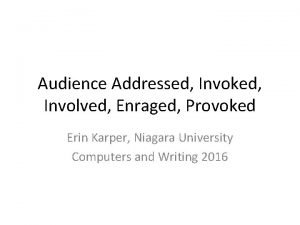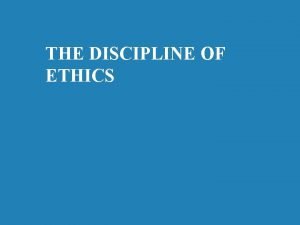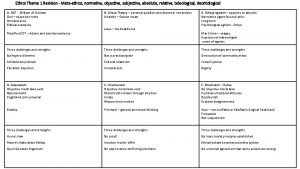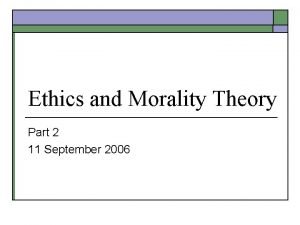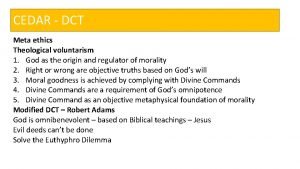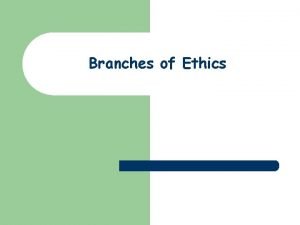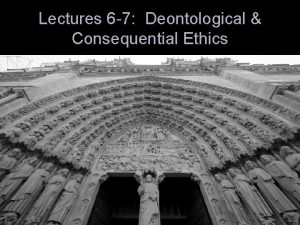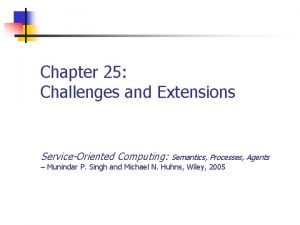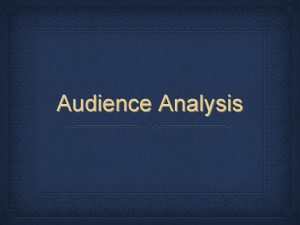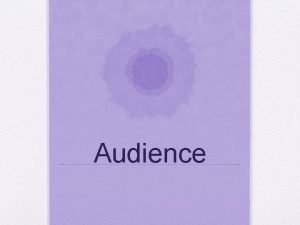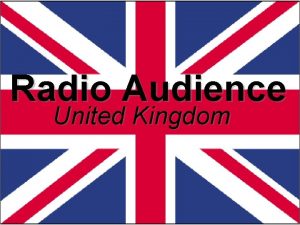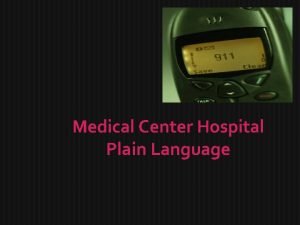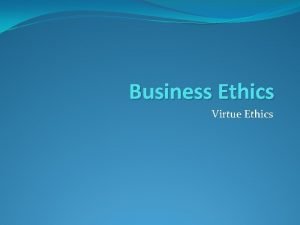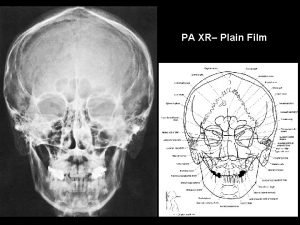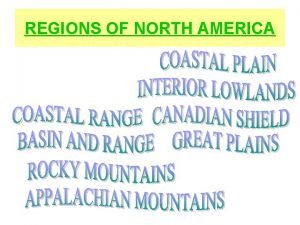Audience and Ethics Plain Language 1 Plain language











- Slides: 11

Audience and Ethics

Plain Language (1) Plain language is defined as the “writing and setting out of essential information in a way that gives a cooperative, motivated person a good chance of understanding it at first reading, and in the same sense that the writer meant it to be understood” (Cutts, 2009, p. xi). “At its heart, plain language involves an ethical relationship between the reader and writer. As a writer, you must want to communicate with your audience clearly” (Graves & Graves, 2011, p. 71).

Plain Language (2) “Plain language, although a readability concern, is not necessarily an ethical concern. Identification of plain language with ethical language mistakes the outward signs of ethics, plain language, for true ethical actions” (Brockmann, 1989, p. v).

Developments in Plain-Language Movement (1) • In the 14 th, 16 th, and 17 th centuries, a plain-language style was used (Willerton, 2015). • In the 1970 s, changes were made to start a plain-language movement. “Doublespeak” was very common with advertisers and politicians. Doublespeak is unclear language with audiences (Willerton, 2015) • In the 1990 s, a plain-language movement gained momentum (Willerton, 2015). • “Plain language is a civil right”(Dieterich, Bowman, & Pogell, 2006).

Development in Plain-language Movement (2) Plain Writing Act of 2010 by President Obama states that federal agencies are required “to demonstrate awareness of plain language, offer plain-language training, and write new public documents in plain language. Agencies must also post annual reports on their compliance with the Plain Writing Act on their websites” Willerton, 2015, pp. 8, 10).

Critics of Plain-language Movement (1) • Mazor (2000) and Kimble (2012) state concerns about plain language: • Plain language is a concept too broad to be useful. • Plain language involves following rules slavishly. • Plain language is only about shortening texts and dumbing them down. • Plain language means writers cannot use technical vocabulary. • Plain language relies on readability formulas that have questionable validity.

Critics of Plain Language Movement (2) • Plain language is not as precise as typical bureaucratic or legal language. • Readers of legal and bureaucratic documents do not like or want plain language. (Willerton, 2015, p. 11)

Critics of Plain Language Movement (3) • Plain language might be problems for nonnative speakers (Willerton, 2015). • A challenge to this claim is that even though plain language cannot accommodate every situation, plain language helps by “reaching many intended readers effectively” (Willerton, 2015, p. 12).

BUROC Model • B: Bureaucratic • Long distance communication for policies and procedures • U: Unfamiliar • Jargon • R and O: Rights oriented • Affect individual choices • C: Critical • Make decisions quickly (Willerton, 2015)

References (1) • Brockmann, R. J. (1989). What is this collection about? In R. J. Brockman & F. Rook (Eds. ), Technical communication and ethics (pp. v -vi). Washington, DC: Society for Technical Communication. • Cutts, M. (2009). Oxford guide to plain English (3 rd ed. ). New York, NY: Oxford University Press. • Dieterich, D. , Bowman, M. , & Pogell, S. (2006). The writing coaches perspective on workplace writing: A conversation with Lee Clark Johns. Issues in Writing, 16(2), 103 -22.

References (2) • Graves, H. , & Graves, R. (2011). A strategic guide to technical communication (2 nd ed. ). Peterborough, ON: Broadview. • Kimble, J. (2006). Lifting the fog off legalese: Essays on plain language. Durham, NC: Carolina Academic Press. • Mazor, B. (2000). Revisiting plain language. Technical Communication, 47(2), 205 -11. • Willerton, R. (2015). Plain language and ethical action: A dialogic approach to technical content in the twenty-first century. New York, NY: Routledge.
